Recently, I saw a great deal of messages like “my internet browser displays me undesirable Next-notification.com pop-up ads, is it a virus?” or “these Next-notification.com pop-up ads in my Chrome making me insane, how to handle them?”. According to the statistics for last months, pc virus distributors began a wide adware circulation campaign. Let me show you, how you can get rid of the computer viruses from your computer, as well as forget about the annoying Next-notification.com pop-ups.





Pop-Ups : Discovering The Nature
You can admit that some websites (like a Next-notification.com) offer you pop-up ads. The message can include something like “do you want to receive alerts relating to the most up to date information?” or “permit notifications to be reported about recent discount rates?”. Typically, such messages are riskless, and may only distract you with its sudden visual appeal. And it can be quickly disabled, in case alerts from this online resource are no longer wanted.
Pop-up notifications are quite an reliable advertising and marketing instrument. If you have an interest in products of some type, you can enable pop-ups from the web site where you can buy this stuff, and also as quickly as these products are in inventory again, or if you can have a price cut – you will certainly get the notice about this. The counterparty – online stores, vehicle lending companies, etc – will certainly be in profit, too – customer will surely get a reminder about the item he/she meant to buy. And also such an advertising and marketing method is nearly free of charge – this factor is really important for corporations.
| Site | Next-notification.com |
| IP Address | 213.227.149.216 |
| Infection Type | Adware, Push notifications, Unwanted Ads, Pop-up Ads |
| Symptoms | Annoying pop-up ads in the right corner. |
| Similar behavior | Cedentwith.com, Hetaint.com, Airclewest.com |
Next-notification.com Pop-Ups Are Not So Safe
However sometimes pop-up ads can show up without your permission, and with a content which is totally various from your existing attentions or search queries. And, besides undesirable Next-notification.com pop-ups from the unknown website, you can at the same time see a great deal of advertisements, consisting of ones on the pages which primarily have no promotions at all. Such a situation can be the signal of adware existence.
Adware is the kind of computer virus which injects into your PC, then begins showing you numerous advertisements. Their content often has no match with your normal search queries. Besides banner promotions, your browser can additionally display you a huge quantity of various Next-notification.com pop-up promotions, which appear in the bottom right corner.
The model of adware usage is extremely sly. The big pack of adware is spread via trojan viruses, which are infiltrated in your system earlier. Advertisements, which are shown to you by malicious app, are paid by their makers. In a few weeks, all antivirus programs began to block these adware, thus, trojan loses in productivity. And to dispatch the user’s desktop, virus distributors start ransomware distribution through these trojans.
Even if there is no active ransomware distribution, your PC might continue to be influenced by adware virus. A big quantity of promotions together with Next-notification.com pop-ups can make your PC as slow-moving as snail, so your regular work will certainly be difficult to execute in normal manner.
How Can I Deal With Next-notification.com Pop-Ups?
Concluding the text above: your computer, along with your data, is in a major risk. To stop this virus, you need to make use of antivirus program. Microsoft Defender, which is embedded in every Windows 10 distribution, has the ability to take care of Next-notification.com pop-ups virus. However, it can not reset the web browser changes which were put into effect by harmful program. An additional negative aspect of the antivirus by Microsoft is its specific susceptability: malware can disable Microsoft Defender with the Group Policies after being infiltrated to your computer system.
To be 100% sure that your system is clean of any viruses now, and will be clean in future, I can advice you to use GridinSoft Anti-Malware.
To detect and erase all malicious applications on your computer, including Next-notification.com pop-ups virus, with GridinSoft Anti-Malware, it’s better to utilize Standard or Full scan. Quick Scan is not able to find all the viruses, because it scans only the most popular registry entries and directories.
You can spectate the detected malicious apps sorted by their possible hazard during the scan process. But to perform any actions against malware, you need to wait until the scan is over, or to stop the scan.
![]()
To set the action for each spotted virus or unwanted program, click the arrow in front of the name of detected malicious app. By default, all the viruses will be moved to quarantine.

Reset browser settings to original ones
To revert your browser settings, you are required to use the Reset Browser Settings option. This action is not able to be intercepted by Next-notification.com virus, hence, you will surely see the result. This option can be located in the Tools tab.

After choosing the Reset Browser Settings button, the menu will be displayed, where you can choose, which settings will be reverted to original.

Reset browser setiings without making use of third-party programs
Besides using antivirus programs for browser recovery, you can pick the “Reset browser settings” function, which is usually embedded in all popular web browsers.
Reset Microsoft Edge  Settings
Settings
- Open "Settings and more" tab in upper right corner, then find here "Settings" button. In the appeared menu, choose "Reset settings" option:
- After picking the Reset Settings option, you will see the following menu, stating about the settings which will be reverted to original:
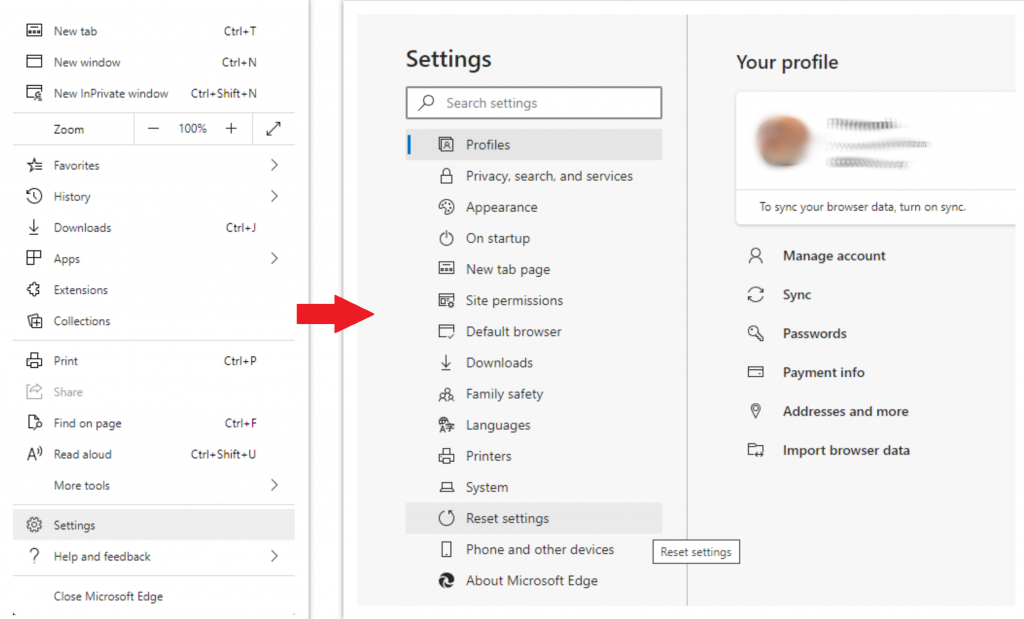
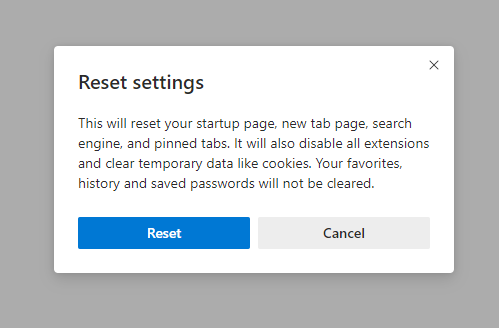
Reset Mozilla Firefox  Settings
Settings
- Open Menu tab (three strips in upper right corner) and click the "Help" button. In the appeared menu choose "troubleshooting information":
- In the next screen, find the "Refresh Firefox" option:
- Open Settings menu by pressing the gear icon in the toolbar (left side of the browser window), then click "Advanced" option, and choose "Browser" button in the drop-down list. Scroll down, to the bottom of the settings menu. Find there "Restore settings to their original defaults" option:
- After clicking the "Restore settings..." button, you will see the window, where all settings, which will be reset, are shown:
- Open Settings tab, find the "Advanced" button. In the extended tab choose the "Reset and clean up" button:
- In the appeared list, click on the "Restore settings to their original defaults":
- Finally, you will see the window, where you can see all the settings which will be reset to default:
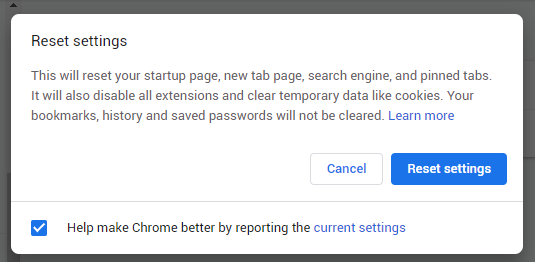
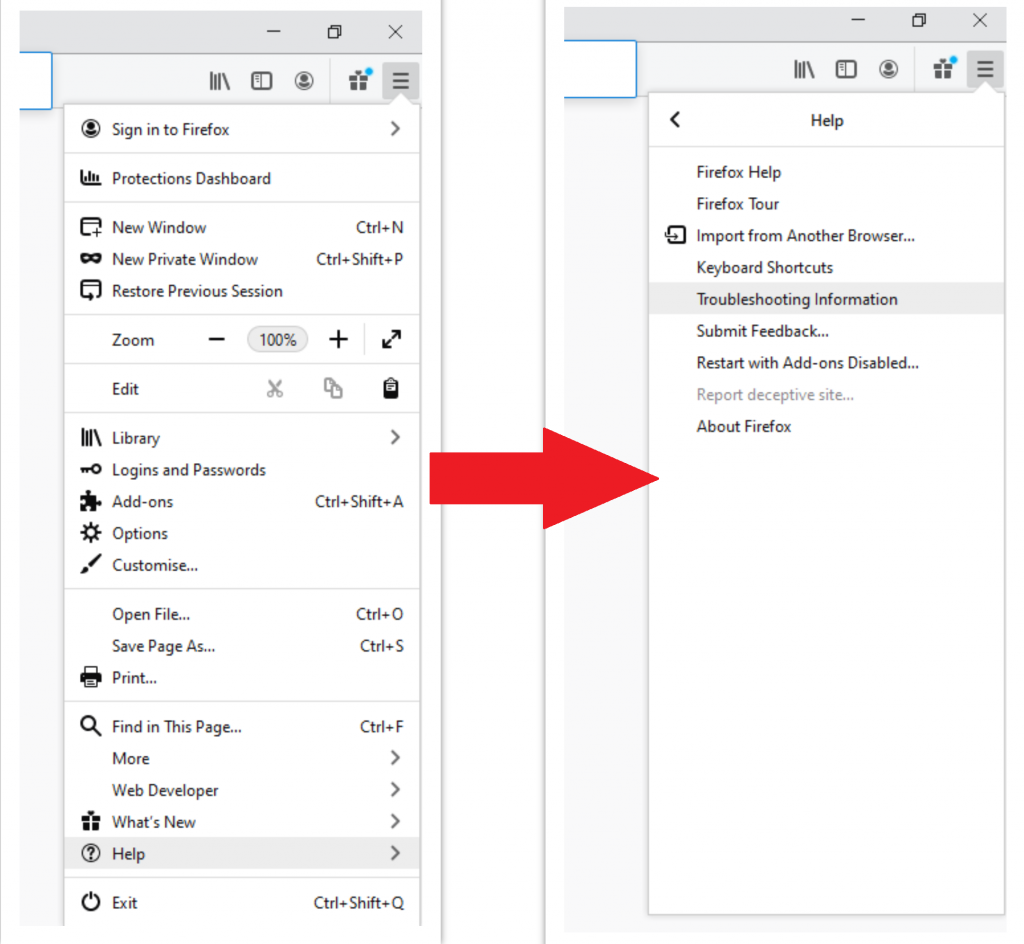
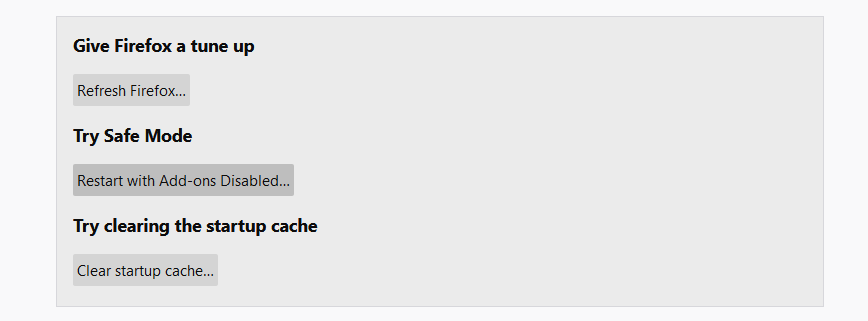 After choosing this option, you will see the next message:
After choosing this option, you will see the next message:

Reset Opera  Settings
Settings


Reset Google Chrome  Settings
Settings
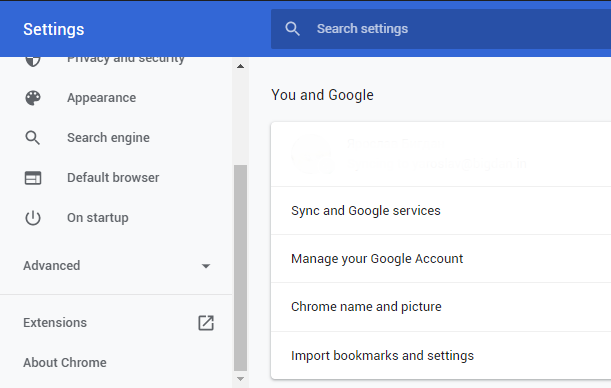
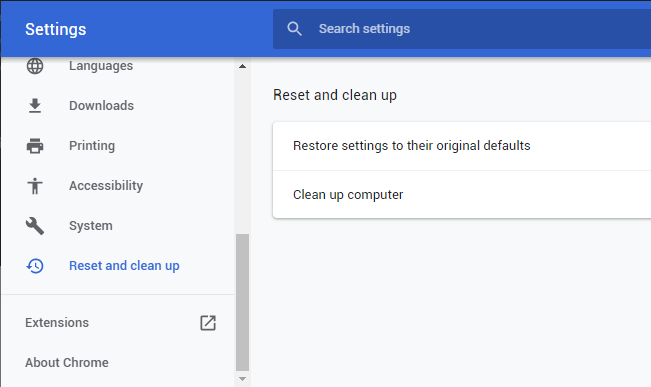
As an afterword, I want to say that the time plays against you and your PC. The activity of browser hijacker Next-notification.com must be stopped as soon as possible, because of possibility of other malware injection. This malware can be downloaded autonomously, or offered for you to download in one of the windows with advertisements, which are shown to you by the hijacker. You need to act as fast as you can.









